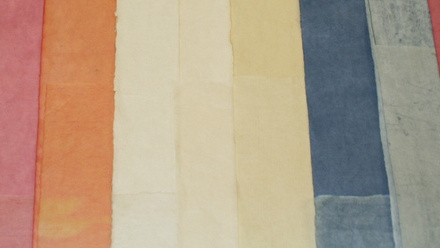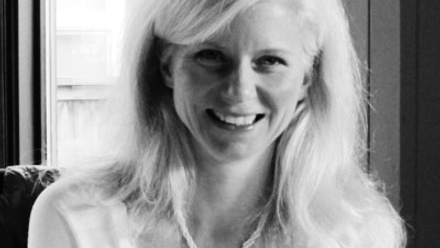Taught by Mariluz Beltran de Guevara and Lara Artemis, the Icon ‘Parchment: History and Conservation’ workshop was hosted by the National Library of Scotland at their Causewayside building in Edinburgh in November 2018. I was lucky enough to attend with funding provided by the Icon Book and Paper Group Professional Development Bursary.
The studio at Causewayside is a great location to host courses, with a lovely bright studio, and easy access to a lecture room (and generously stocked tearoom!). Special thanks to the staff at the National Library who worked to make the whole course run so smoothly.
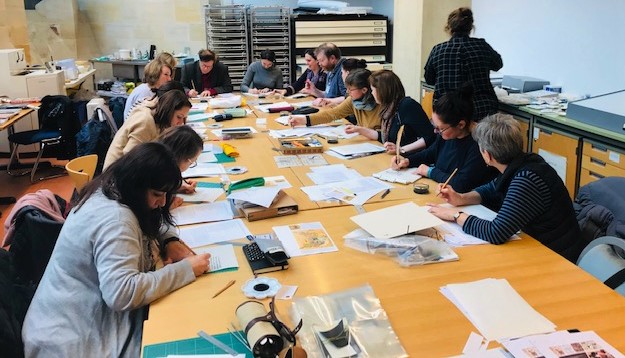
Working in the studio at Causewayside
Lara and Mariluz between them have a wealth of experience and understanding of the nature of parchment and the particular challenges of working with parchment collections from their professional work and academic research. Their heroic effort to condense over three thousand years of history and practice into a two day workshop for us resulted in a detailed and fascinating course – I for one found a great deal of the history was completely new to me. Lara touched on the reasons behind the initial growth of the parchment industry from the ancient Egyptian trade embargo on papyrus, right up to the current supply and demand issues in the parchment industry today. She even addressed the ever-growing concern amongst conservators and artisans over the availability of materials after Brexit.
We learned about the growth of a specific mould, grown from wine fermentation bacterium, commonly found on charters that were stored – you guessed it- in wine cellars in London during the Blitz. We also touched on oddities like purple parchment, dyed with lichen, sometimes found in Icelandic manuscripts.
After the morning lecture on historic parchment production and use, we were given the chance to create our own illuminated manuscripts. With sepia and iron gall inks, a range of pigments mixed in the studio including lapis and manganese, and a selection of dipping pens, quills, and reed pens to play with, the room rapidly fell silent.
It’s possible we were all slightly more engrossed than was strictly necessary, but some of the illuminations that resulted were very beautiful- and there was some reluctance to chop up our manuscripts to practice repair techniques for the afternoon!
We began the afternoon session with a lecture on the history of the conservation of parchment, including a chronology of adhesives used for pigment and ink consolidation; from rabbit skin glue, bovine gelatine, and parchment size from the 5th century onwards; to cellulose acetate, PVA, and Plextol, in the mid 20th century; all the way back to the bovine type-B gelatine and isinglass sturgeon fish glue popular again today.
Linking the theory to practical experiments we had the opportunity to work on our own (now sadly sliced and torn) illuminated manuscripts. Lara and Mariluz worked to provide us with a range of glues and repair materials historically used to conserve parchment. They talked us through the application of these adhesive methods, as well as showing us historic stitching techniques and methods of repairing parchment without adhesive. This was particularly useful, as it gave us the chance to really understand the old repairs we may come across in our work on collections, and see which, if any, will need to be removed or replaced.
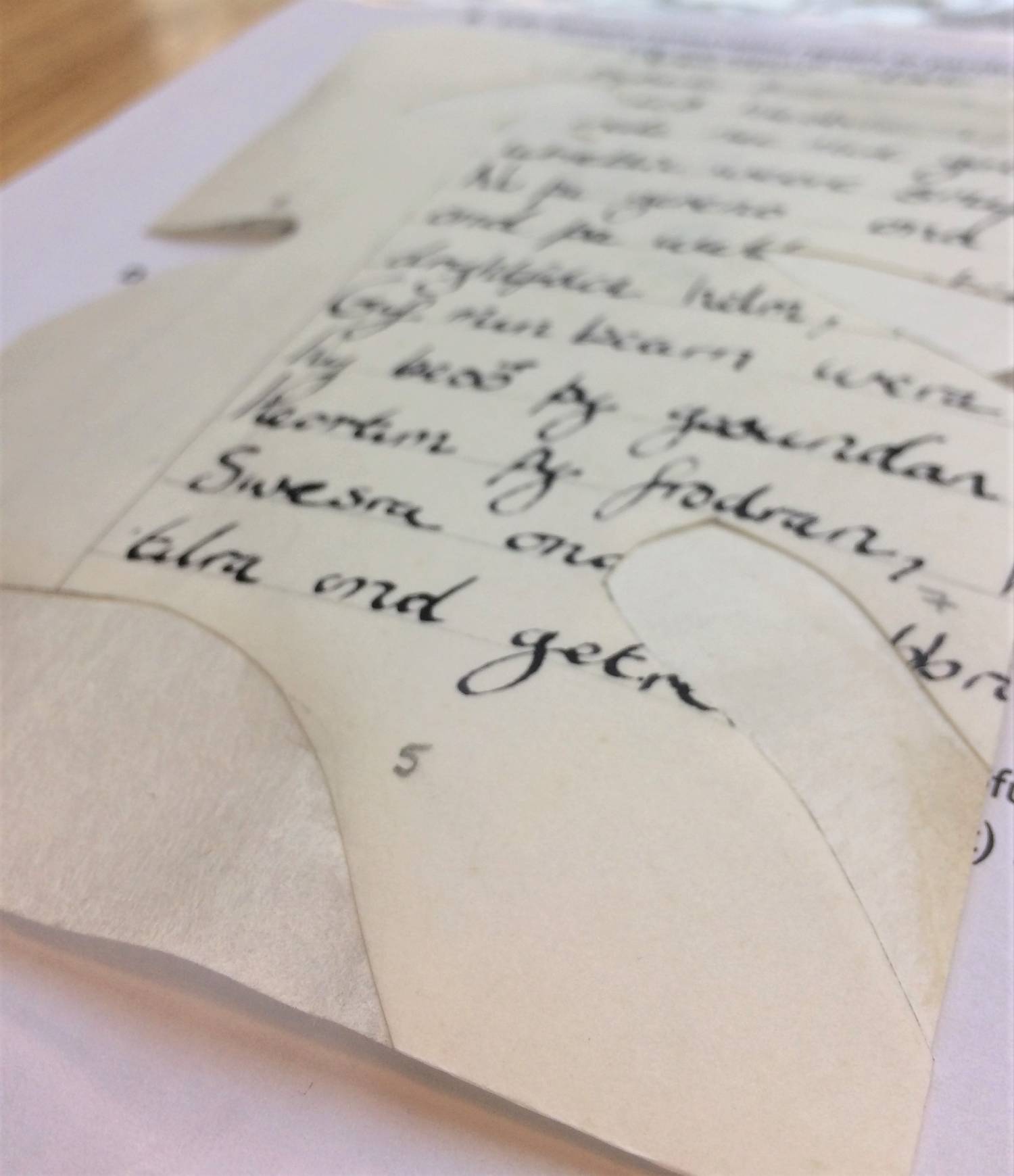
The second day of the course Mariluz focused on the chemical makeup of parchment, and modern conservation methods and research. We had the opportunity to test modern conservation techniques on our manuscript samples and discussed which were most effective and user friendly in the long term. We studied the chemical deterioration of collagen structures, and touched on causes and consequences of that deterioration.
There is a lifetime of research to do on the chemical deterioration of collagen; but in short, don’t get it wet.
We were encouraged to look into the Improved Damage Assessment of Parchment (IDAP) project, which is a resource hosted by the Royal Danish Academy of Fine Arts. They investigate historical parchments at a microscopic level, building an interactive database for the damage assessment of, and research into, parchment material.
At the end of the second day we had the opportunity to try laser cut Melinex spring tab attachments for mounting parchment, humidification techniques, and different tension drying methods, including earth magnets.
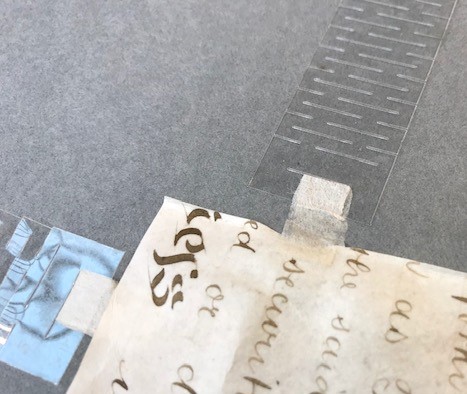
Although I (and most people I spoke to on the course) were using sieved gelatine mousse and re-moistenable Japanese tissue with gelatine adhesive on our collections already, it was very helpful to have the opportunity to try out repairs with combinations of goldbeaters’ skin and caecum with isinglass and funori. I felt that the caecum repair attached with isinglass adhesive was a standout winner on my test piece and is certainly something I would consider using in future treatments.
The course was a great success, and it was particularly nice to have the opportunity on the last day to sit and discuss issues pertaining to our specific collections, which Lara and Mariluz were able to offer their expert advice on.
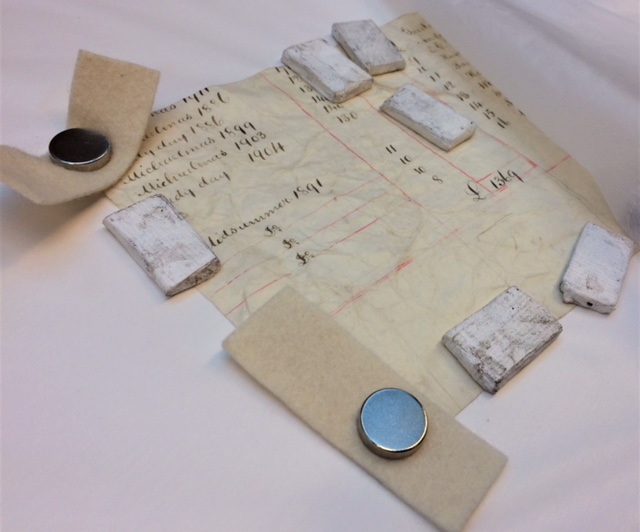
There were many very interesting elements to take away from this course, but overwhelmingly what I found most poignant was the emphasis on managing the expectations of our clients. The nature of parchment is better understood now than ever, and with that understanding comes a realignment of our priorities. Aged parchment is rarely flat, and rarely uniform in colour and texture. It warps, and pulls, and moves constantly with the slightest change in humidity and temperature, and that is something that we must be comfortable with in our collections. The emphasis needs to be on the storage and mounting of parchment that is sympathetic to the nature of the material. Additionally it is also recognising that the beauty of this material is in its strength and adaptability, not on its uniformity.
Many thanks again to Mariluz Beltran de Guevara and Lara Artemis, ICON Book and Paper Group, The National Library of Scotland, and the Book and Paper Gathering for their support.

